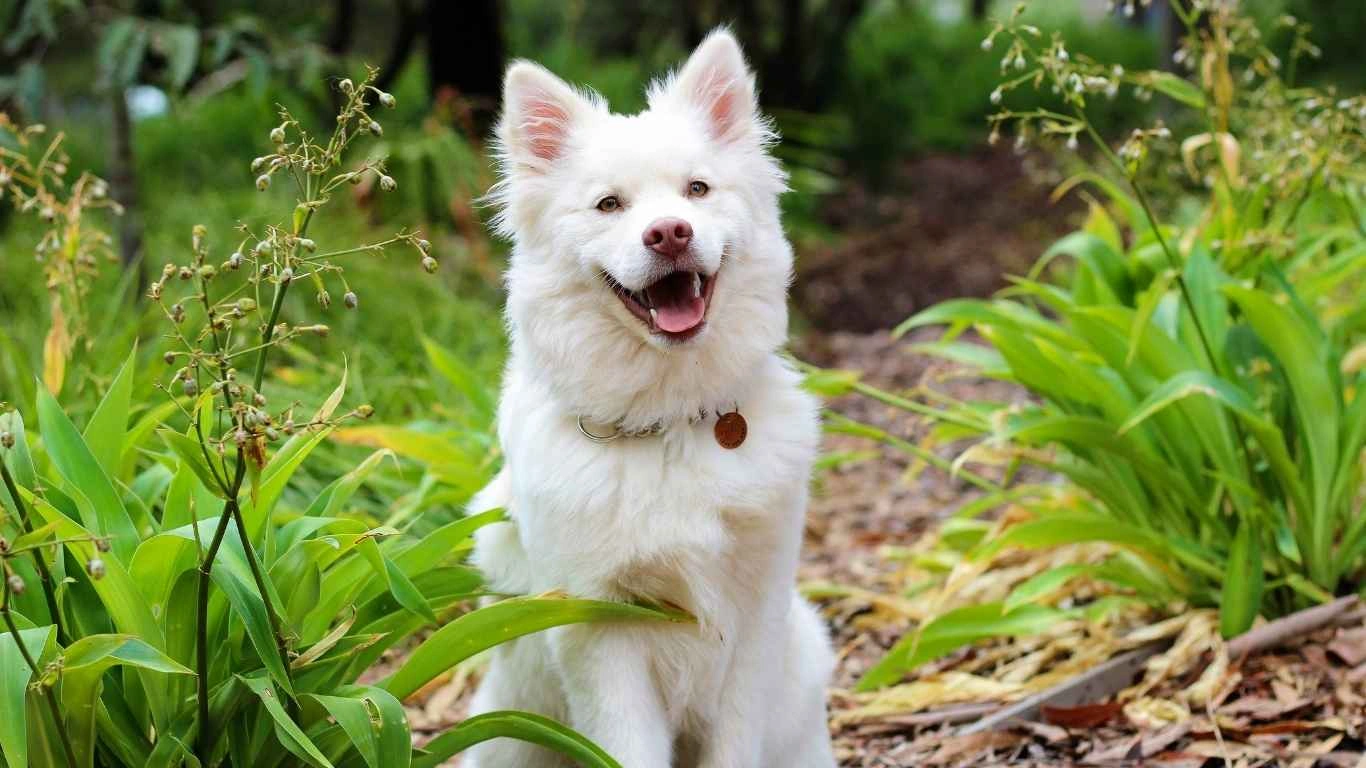How to Prepare Nutritionally Balanced Vegan Dog Food for Your Dog
In Part 1, we dove into the basics of vegan dog food, exploring the nutritional requirements and why some pet parents choose a plant-based diet for their dogs. Now, let’s get into the nitty-gritty of how to prepare nutritionally balanced vegan dog food. In this section, we’ll focus on the essential ingredients, tips, and common mistakes to avoid to ensure your furry friend’s meal is both nutritious and tasty.
Essential Ingredients for Vegan Dog Food

When preparing vegan dog food, you can’t just throw any plant-based ingredients together. Dogs have specific nutritional needs, and it’s important to pick the right combination of plant-based proteins, fats, and vitamins. From my experience as an Animal Care Specialist, I’ve seen firsthand how well-balanced meals can make a huge difference in a dog’s overall health and energy levels. Here are the key ingredients you should consider:
Plant-Based Protein Sources
Dogs need protein to support their muscles, skin, and overall health. Fortunately, there are plenty of plant-based protein sources that provide the essential amino acids dogs require. Some of the best options include:
- Legumes – Lentils, chickpeas, and beans are fantastic sources of protein and fiber. They also offer a good amount of iron, which is essential for dogs.
- Quinoa – This ancient grain contains all nine essential amino acids, making it a complete protein source for dogs.
- Tofu or Tempeh – If you’re using soy products, make sure they’re organic and non-GMO. These are both great sources of protein and contain important nutrients like calcium.
- Seitan – Made from wheat gluten, seitan is packed with protein and can be a meaty addition to your dog’s meals.
Healthy Fats
Healthy fats are crucial for dogs’ energy and skin health. While animals like fish provide Omega-3s, vegan options are available to meet these needs:
- Flaxseeds – These tiny seeds are packed with Omega-3 fatty acids, which help promote a healthy coat and reduce inflammation.
- Chia Seeds – Similar to flaxseeds, chia seeds are rich in fiber and healthy fats. They’re also great for hydration, as they absorb water.
- Coconut Oil – This is a great fat source that can support your dog’s digestive health and give their coat a shiny, healthy look.
Vitamins and Minerals
Vegan dog food may not provide all the vitamins and minerals a dog needs on its own, so supplementation is key. Here are some essential nutrients to keep an eye on:
- Vitamin B12 – This is one vitamin dogs can’t get from plant-based sources. You can supplement it through fortified foods or B12 supplements.
- Vitamin D – While some plant-based foods contain small amounts of vitamin D, you may need to add supplements to ensure your dog is getting enough.
- Calcium – Since vegan diets exclude dairy, it’s important to provide a source of calcium, such as ground-up calcium carbonate or calcium-rich greens like kale.
- Iron – Plant-based foods such as lentils, quinoa, and spinach are great iron sources that help your dog maintain healthy blood cells.
Meal Preparation Tips for a Balanced Vegan Dog Diet

Now that you know what ingredients to include in your dog’s vegan diet, let’s talk about how to prepare the meals. I’ve worked with pet parents who thought they could just whip up a meal with random ingredients, but balance is key! Here are a few tips I always give:
1. Rotate Ingredients
Dogs, just like humans, benefit from variety in their diet. In my experience, dogs thrive when their meals are rotated regularly to avoid nutrient deficiencies and keep things interesting. Try swapping between different grains, protein sources, and vegetables. For instance, one week you could use quinoa, while the next you could use barley. This variety ensures they’re getting a full spectrum of nutrients without missing out on anything.
2. Use Whole Foods, Not Processed
Whole foods are your best bet for a healthy dog. Stay away from overly processed vegan ingredients. For example, use fresh lentils and beans rather than canned versions, which can contain added sugars or salts. I always recommend choosing foods that are as close to their natural state as possible to get the most nutritional value.
3. Don’t Skip Supplements
Vegan diets often lack some essential nutrients that are typically found in animal products. As I mentioned earlier, vitamin B12 and calcium are two key examples. You’ll want to speak with your vet or a pet nutritionist to determine the best supplements for your dog’s needs. It’s crucial to remember that adding these is part of the process to keep your dog healthy in the long term.
4. Cook and Prep in Bulk
One thing that has saved me a lot of time is preparing meals in bulk. If you’re cooking at home for your dog, consider making large batches of food and freezing portions for later. Not only does this save time, but it also ensures your dog’s meals are always fresh and ready to go. Just remember to store everything in airtight containers to avoid freezer burn!
Common Mistakes to Avoid

As much as we want to do the best for our pets, I’ve seen a few common mistakes that pet parents make when transitioning their dogs to a vegan diet. Let’s go over these so you can avoid them:
1. Not Consulting a Veterinarian
One of the biggest mistakes is not consulting a veterinarian or pet nutritionist before switching your dog to a vegan diet. As much as you may want to give your dog a plant-based meal, it’s important to have professional guidance to ensure you’re meeting their specific nutritional needs. A vet can help you with meal planning and supplement recommendations to keep your dog healthy.
2. Ignoring Signs of Nutrient Deficiencies
Sometimes, even the best intentions can fall short. If you notice your dog becoming lethargic, losing weight, or showing signs of digestive distress, it could be a sign that their vegan diet is lacking something crucial. Keep an eye on these symptoms and don’t hesitate to adjust your recipes or seek professional help if necessary.
3. Overlooking Protein Balance
Another common mistake I see is not balancing the protein sources properly. It’s tempting to rely on a single plant-based protein source, but that may not provide all the essential amino acids your dog needs. Mixing up protein sources and using a variety of plants will help ensure your dog gets a complete protein profile.
In the next section, we’ll dive even deeper into how to prepare these meals, and I’ll share some of my favorite vegan dog food recipes that you can easily try at home. Stay tuned!
In the previous sections, we’ve talked about the essential ingredients and tips for preparing nutritionally balanced vegan dog food. Now, let’s get into some easy and delicious recipes you can make at home for your dog. Trust me, I’ve seen how excited dogs get when their meals are both nutritious and tasty, and I’m sure your dog will love these too!
Easy Vegan Dog Food Recipes

Making your own vegan dog food doesn’t have to be complicated. In fact, with the right ingredients, you can prepare healthy meals in just a few steps. I’ve put together some of my favorite recipes that are both simple and packed with nutrients your dog will love. Let’s jump in!
Recipe 1: Quinoa & Sweet Potato Delight
This recipe combines the high protein content of quinoa with the vitamin-packed sweet potato, making it a perfect meal for any dog. Here’s how to make it:
- Ingredients:
- 1 cup quinoa
- 2 medium sweet potatoes
- 1/2 cup peas (frozen or fresh)
- 1/4 cup flaxseeds
- 1 tablespoon olive oil
- 1/2 teaspoon turmeric (optional for anti-inflammatory benefits)
- Instructions:
- Cook the quinoa according to package instructions.
- Peel and dice the sweet potatoes, then steam or boil them until tender.
- In a large bowl, combine the cooked quinoa, mashed sweet potatoes, and peas.
- Add the flaxseeds, olive oil, and turmeric, and mix thoroughly.
- Serve warm or store in the fridge for up to 5 days.
Recipe 2: Lentil & Vegetable Stew
If your dog enjoys hearty meals, this lentil and vegetable stew is a great option. It’s packed with plant-based protein, fiber, and tons of vitamins. Here’s how to make it:
- Ingredients:
- 1 cup lentils (red or green)
- 1/2 cup carrots, diced
- 1/2 cup zucchini, diced
- 1/2 cup spinach, chopped
- 1/4 cup coconut oil
- 4 cups water or vegetable broth
- 1 teaspoon cumin (optional)
- Instructions:
- Rinse the lentils thoroughly. In a large pot, add lentils, carrots, zucchini, and water (or broth). Bring to a boil, then reduce to a simmer.
- Simmer for about 30 minutes, or until the lentils are soft and the vegetables are tender.
- Stir in the spinach and coconut oil, and cook for another 5 minutes.
- Add the cumin and mix well.
- Serve warm, or store leftovers in an airtight container for up to 5 days in the fridge.
Recipe 3: Chickpea & Brown Rice Stir-Fry
This quick and easy stir-fry is a great option for busy pet parents. Packed with protein, healthy fats, and fiber, it’s a meal your dog will devour!
- Ingredients:
- 1 cup cooked brown rice
- 1 cup chickpeas (cooked or canned, drained and rinsed)
- 1/2 cup broccoli, chopped
- 1/2 cup carrots, grated
- 1 tablespoon sesame oil
- 1/4 teaspoon ground ginger (optional)
- Instructions:
- In a large pan, heat the sesame oil over medium heat.
- Add the chickpeas, broccoli, and carrots, and sauté for about 5-7 minutes until the veggies are soft.
- Stir in the cooked rice and ground ginger, and cook for another 3-5 minutes, mixing everything well.
- Serve immediately or store in the fridge for up to 4 days.
Feeding Tips for a Balanced Vegan Diet

Now that you have some recipes to try, it’s time to talk about feeding your dog a balanced vegan diet. As an Animal Care Specialist, I’ve learned that the key to a successful vegan diet for dogs is consistency and balance. Here are some important feeding tips:
1. Portion Control is Key
Just like with any diet, portion control is essential to maintaining a healthy weight. Make sure you’re not overfeeding or underfeeding your dog. Follow the serving size recommendations on your dog’s food packaging, or consult with your vet to determine the right amount for your dog based on their size and activity level.
2. Regular Vet Check-Ups
When you switch your dog to a vegan diet, regular vet check-ups are even more important. A vet can monitor your dog’s health and make sure they’re not developing any nutrient deficiencies. I always recommend checking your dog’s weight, coat condition, and overall energy levels during routine visits.
3. Don’t Skip the Supplements
If you’re not already adding supplements to your dog’s meals, now’s the time to start. Some essential nutrients, like vitamin B12 and omega-3 fatty acids, are not naturally found in plant-based foods. Make sure to include these in your dog’s diet to ensure they stay healthy and happy!
4. Hydration is Important
Make sure your dog always has access to fresh water, especially when you’re feeding them a homemade vegan diet. Hydration is just as crucial as the food itself, and it helps with digestion and overall health.
References & Disclaimer
References: Always ensure you’re getting advice from reputable sources. Here are a few trusted places to learn more about vegan dog nutrition:
Disclaimer: This article is for informational purposes only and should not replace professional veterinary advice. Always consult with a veterinarian before making any significant changes to your dog’s diet. Each dog is unique, and what works for one may not work for #LNF






